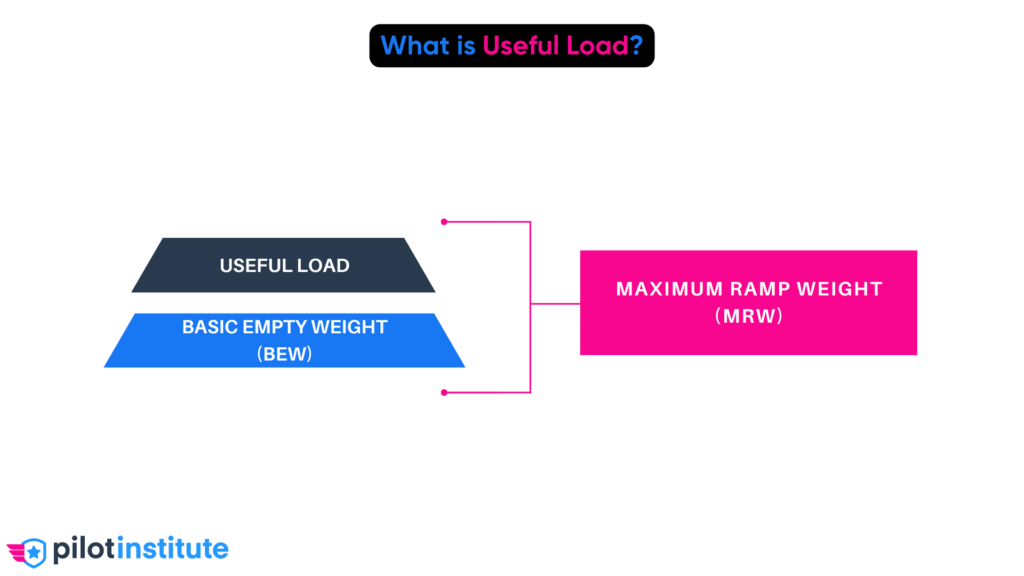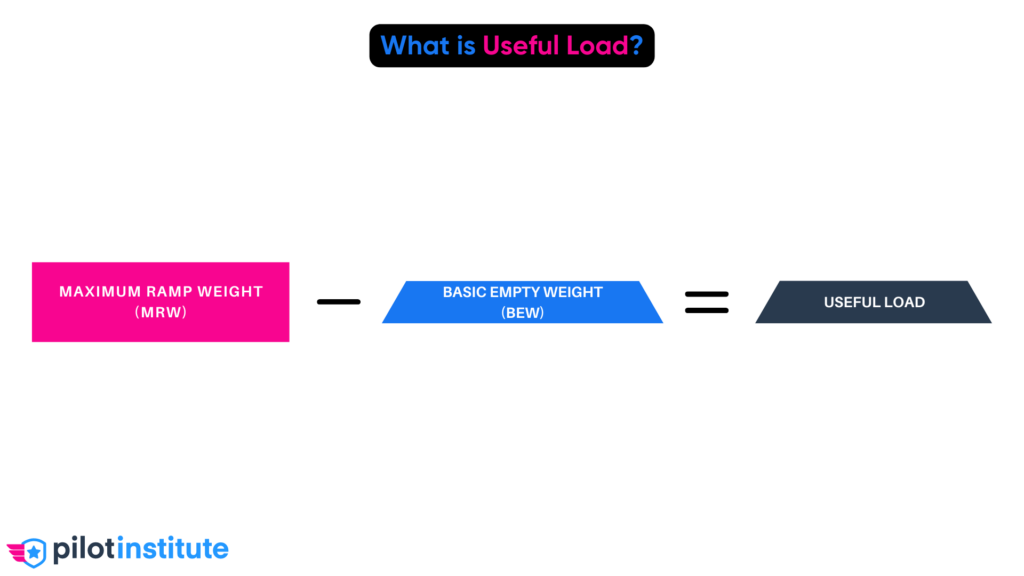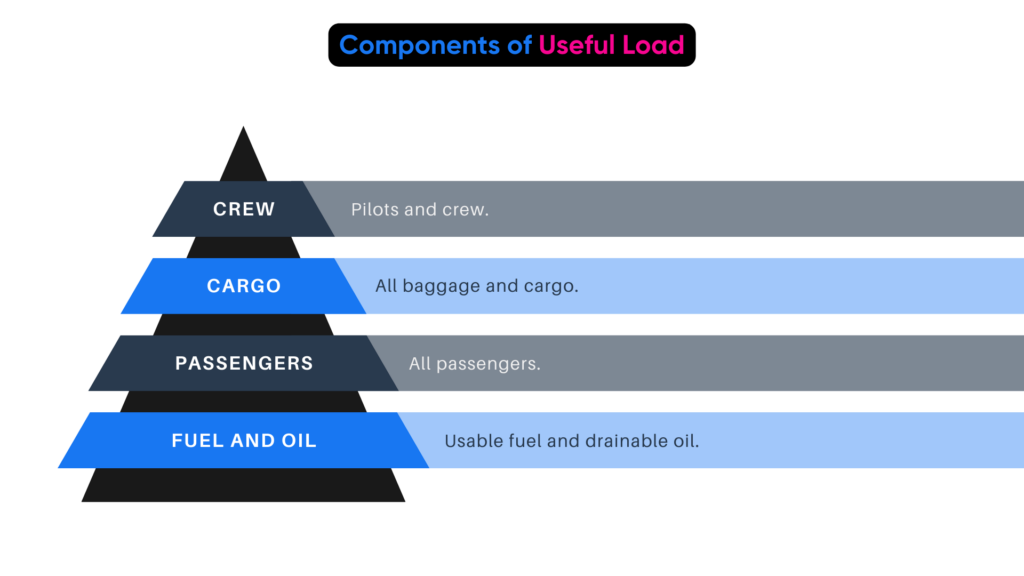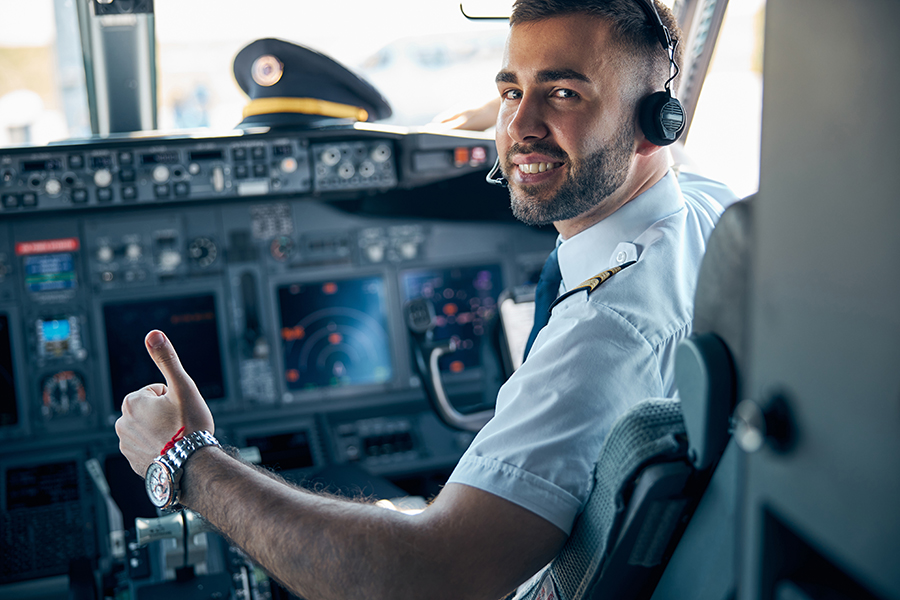Whether you’re taking off for your first solo or charting a cross-country course, understanding the concept of “useful load” is crucial.
It’s not just about numbers or calculations – it’s about safety, efficiency, and proper flight operations.
But here’s the kicker.
There’s a fair chance you might be harboring some misconceptions about what “useful load” truly means.
So, let’s clear the air and get a solid grasp of this vital concept!
Definition of Useful Load

“Useful load” is an aviation term that refers to the weight of the pilot, crew, passengers, baggage, usable fuel, and drainable oil. Essentially, it’s everything that the aircraft carries that isn’t part of the aircraft’s basic empty weight.
Now, don’t get it twisted with terms like Maximum Ramp Weight (MRW) or Basic Empty Weight (BEW). They are related, but not the same.
The MRW is the maximum weight at which the pilot is allowed to taxi, given the aircraft’s design. The BEW, on the other hand, is the weight of the aircraft itself, including all necessary operating equipment, unusable fuel, and undrainable oil.
The “useful load,” therefore, is what’s left when you subtract the BEW from the MRW. It’s a crucial part of ensuring your aircraft is not overweight, thereby ensuring performance and safety.

Components of Useful Load

The useful load consists of four main components: fuel and drainable oil, passengers, cargo, and the weight of the pilot (and crew, if applicable).
The fuel component includes all usable fuel aboard the aircraft. It’s vital to consider the fuel weight as it fluctuates based on your flight distance, weather conditions, and other factors. Remember, the weight of the fuel significantly contributes to your aircraft’s total weight.
Passenger weight is another crucial part of the useful load. It’s the combined weight of everyone onboard, excluding the pilot and crew. This also includes any personal items passengers bring along.
Cargo, often overlooked, is an essential component of the useful load. It can be anything from the luggage stored in the aircraft to supplies needed for your flight.
Lastly, the weight of the pilot and any additional crew members is included in the useful load. Keep in mind that this also includes any personal gear you bring on board.
How to Calculate Useful Load
Calculating useful load might sound daunting, but it’s straightforward once you know the right steps.
The formula for useful load is Maximum Ramp Weight (MRW) minus Basic Empty Weight (BEW).
Let’s put it into practice with a simple example. Imagine you’re flying an aircraft with an MRW of 3,400 pounds and a BEW of 2,000 pounds. What’s the useful load?
To find the answer, subtract the BEW from the MRW: 3,400 pounds (MRW) – 2,000 pounds (BEW) equals 1,400 pounds.
So, your useful load is 1,400 pounds. This weight includes everything you can possibly load into your aircraft: fuel, passengers, cargo, and crew.
Remember, knowing your useful load is not just about adhering to regulations – it’s crucial for your aircraft’s performance and the flight’s safety. So always make sure you do the math before each flight.
The Legal Side of Useful Load
Understanding the concept of “useful load” isn’t just essential for operational efficiency and safety – it’s also a legal requirement.
According to the Federal Aviation Regulations (FARs), it’s every pilot’s responsibility to ensure their aircraft is not loaded beyond its approved maximum weight.
The specific regulation addressing this topic is found in Title 14 of the Code of Federal Regulations (14 CFR). Section 91.103(b) stipulates: “Each pilot in command shall, before beginning a flight, become familiar with all available information concerning that flight.”
In practice, this involves calculating the aircraft’s performance for the specific flight by using actual weather information and weight (including useful load!).
In essence, the FAA requires all pilots to ensure they’re within the prescribed weight and balance limits before every flight. In the event of an accident or incident, pilots may be held legally accountable if they have knowingly overloaded their aircraft or have not properly performed a weight and balance calculation.
So remember, always do your homework when it comes to useful load – it’s a legal requirement, and, more importantly, a cornerstone of safe aviation.
Incidents Caused by Miscalculating Useful Load
July 2020 TUI Airways Flight
In July 2020, a TUI Airways flight saw a miscalculation of useful load due to a software glitch. This error led to adult female passengers titled “Miss” being wrongly classified as children.
Consequently, their average weight for take-off calculations was underestimated, making the aircraft seem 1,244kg lighter than it was.
Despite the plane’s calculated and actual weights differing by over a tonne, flight safety wasn’t compromised, and the aircraft landed safely at its destination.
The issue, a reminder of the importance of precise load calculations, was corrected in their IT system, with additional manual checks introduced to prevent future mishaps.
Cubana de Aviación Flight 972
Another noteworthy incident demonstrating the gravity of correctly calculating useful load involved Cubana de Aviación Flight 972 (operated by Mexican airline Globar Air). On May 18, 2018, shortly after taking off from José Martí International Airport in Havana, the Boeing 737 crashed due to what was later identified as weight and balance issues.
The flight, destined for Frank País Airport in Holguín, Cuba, ended tragically when it plunged to the ground shortly after takeoff. Investigations later revealed that the aircraft’s center of gravity was improperly positioned.
This imbalance resulted from a miscalculation of the passengers and cargo weight. In addition to the miscalculation of weight and balance, as well as the inability of the crew to recover, investigators found “inconsistencies in the crew’s training” and “low operational standards” of the airline.
Global Air ceased operations and declared bankruptcy the same year.
Conclusion
Grasping the concept of “useful load” is vital for any aspiring aviator. It’s not merely a part of aviation terminology but a crucial aspect of flight safety, aircraft performance, and efficiency.
Whether you’re flying solo or with passengers, short haul or long, always remember: the importance of calculating your useful load cannot be overstated.



